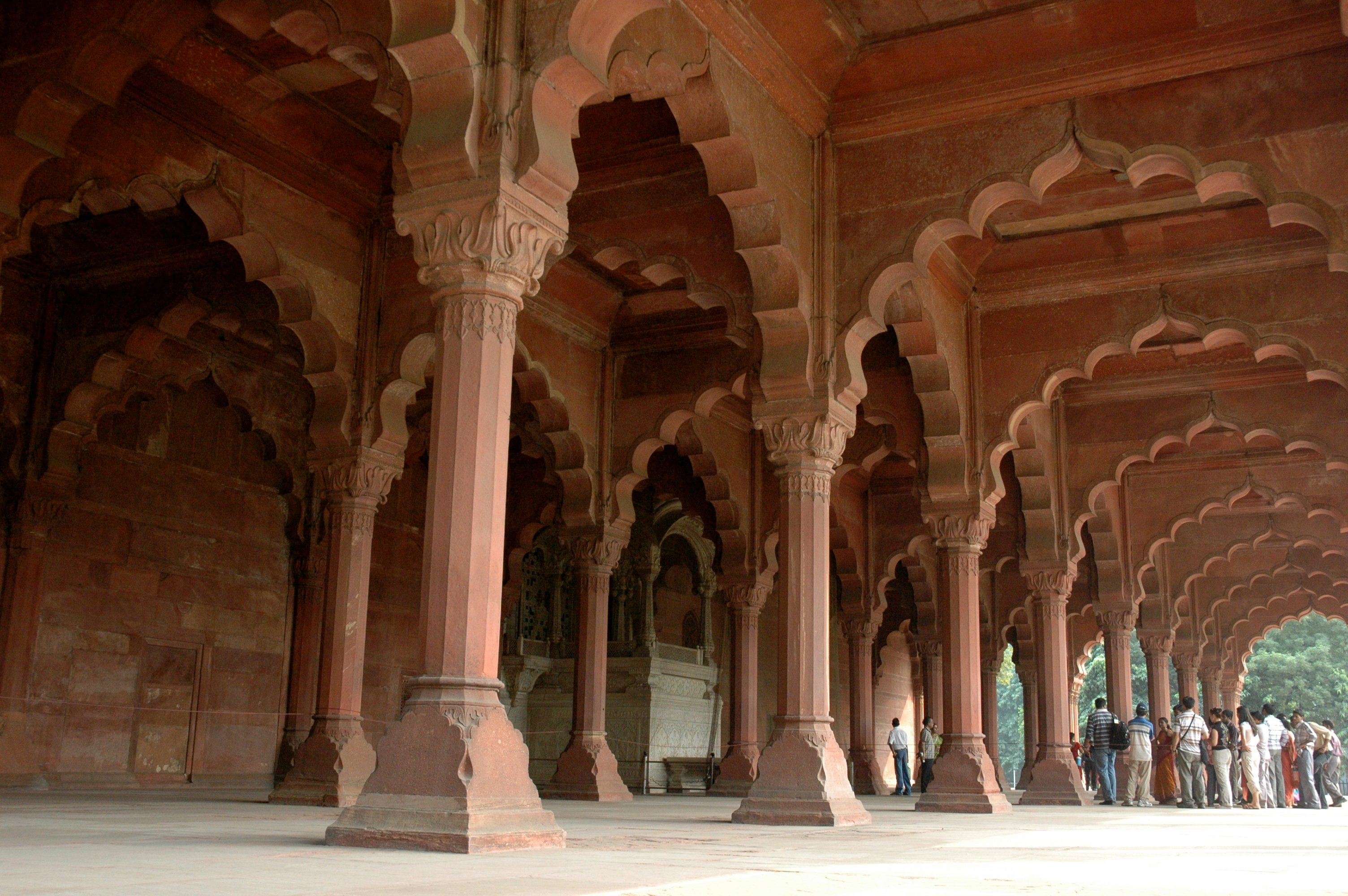Diwan-i-Am (Red Fort) on:
[Wikipedia]
[Google]
[Amazon]

 The ''Diwan-i-Am'', or Hall of Audience, is a room in the
The ''Diwan-i-Am'', or Hall of Audience, is a room in the
File:Ghulam Ali Khan 009b.jpg, The wall of the balcony with inlay work (painting by Ghulam Ali Khan, before 1854)
File:Royal Platform with Marble Canopy - Diwan-i-Am - Red Fort - Delhi 2014-05-13 3213.JPG, The throne of
Red Fort
The Red Fort or Lal Qila () is a historic fort in Old Delhi, Delhi in India that served as the main residence of the Mughal Emperors. Emperor Shah Jahan commissioned construction of the Red Fort on 12 May 1638, when he decided to shift hi ...
of Delhi where the Mughal emperor
The Mughal emperors ( fa, , Pādishāhān) were the supreme heads of state of the Mughal Empire on the Indian subcontinent, mainly corresponding to the modern countries of India, Pakistan, Afghanistan and Bangladesh. The Mughal rulers styled t ...
Shah Jahan (1592-1665) and his successors received members of the general public and heard their grievances.
The inner main court to which the ''Nakkarkhana'' led was 540 feet broad, 420 feet deep, and surrounded by arcade galleries, where chieftains (''umaras'') on duty were posted. On the further side of it is the ''Diwan-i-Am''.
The ''Diwan-i-Am'' consists of a front hall, open on three sides and backed by a set of rooms faced in red sandstone. The hall is 100 ft x 60 ft and divided into 27 square bays on a system of columns which support the arches. The roof is spanned by sandstone beams.
The proportions of this hall, of its columns, and of the engraved arches show high aesthetics and fine craftsmanship. With an impressive façade of nine engraved arch openings, the hall was ornamented with gilded and white shell lime '' chunam'' plaster work. Its ceiling and columns were painted with gold.
In the centre of the eastern wall stands a marble canopy (''jharokha
The Jharokha is a stone window projecting from the wall face of a building, in an upper story, overlooking a street, market, court or any other open space. A common feature in classical Indian architecture, most prominent in Rajasthan. It is su ...
'') covered by a "Bengal" roof. A marble dais below the throne, inlaid with semi-precious stones, was used by the prime minister (''wazir'') to receive petitions. The emperor was separated from the courtiers by a gold-plated railing, while a silver railing ran around the remaining three sides of the hall. The audience ceremony is known as ''Jharokha Darshan
''Jharokha Darshan'' ( fa, جهروکه درشن) (Hindi: झरोखा दर्शन) was a daily practice of addressing the public audience ('' darshan'') at the balcony (''jharokha'') at the forts and palaces of medieval kings in India. ...
''.
Behind the canopy, the wall is decorated with panels inlaid with multi-coloured ''pietra dura
''Pietra dura'' () or ''pietre dure'' () ( see below), called parchin kari or parchinkari ( fa, ) in the Indian Subcontinent, is a term for the inlay technique of using cut and fitted, highly polished colored stones to create images. It is c ...
'' stones. They represent flowers and birds and are reputedly carved by Austin de Bordeaux, a Florentine jeweler. The hall was restored by Lord Curzon, while the inlay work of the throne recess and the plaques of the arch to the west side of the throne were restored by the Florentine artist, Mennegatti. Bernier gives a full account of the splendid appearance of the hall during the rule of Aurangzeb, as well as the 17th century merchant Jean-Baptiste Tavernier
Jean-Baptiste Tavernier (1605–1689) was a 17th-century French gem merchant and traveler. Tavernier, a private individual and merchant traveling at his own expense, covered, by his own account, 60,000 leagues in making six voyages to Persia ...
.
Gallery
Shah Jahan
Shihab-ud-Din Muhammad Khurram (5 January 1592 – 22 January 1666), better known by his regnal name Shah Jahan I (; ), was the fifth emperor of the Mughal Empire, reigning from January 1628 until July 1658. Under his emperorship, the Mugha ...
(today with anti-bird netting)
File:Throne of king Akbar Red fort Delhi.jpg, Throne detail
File:Diwan-i-Aam Description.jpg, Diwan-i-Am Description
See also
* Diwan-i-Khas *Peacock Throne
The Peacock Throne ( Hindustani: ''Mayūrāsana'', Sanskrit: मयूरासन, Urdu: تخت طاؤس, fa, تخت طاووس, ''Takht-i Tāvūs'') was a famous jewelled throne that was the seat of the emperors of the Mughal Empire in India ...
References
External links
{{commonscat-inline Red Fort